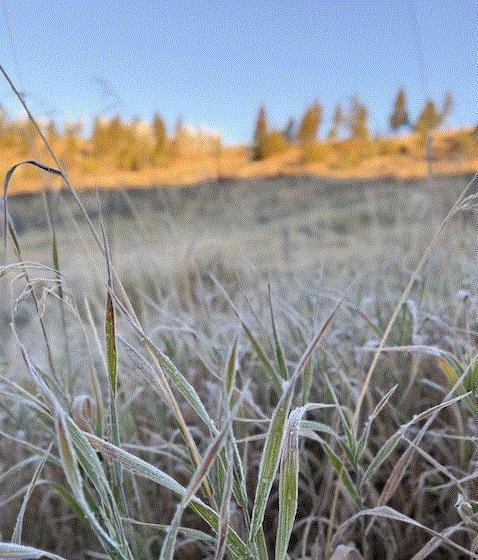Vermicompost Research
A new STUDY published last month in BMC Plant Biology explored the effects of heat-treated vermicompost on lettuce seedlings. Researchers from Turkey looked at both untreated vermicompost and heat-treated vermicompost, a common practice to reduce the risk of microbial contamination. (As a refresher, vermicompost is nutrient-rich organic compost made from worm-digested waste.)

A few interesting findings:
-
Heat-treating the vermicompost does negatively impact the compost’s microbial properties; however, in the end, this did not significantly impact seedling growth or the chemical properties of the compost.
-
Too much of a good thing can have a negative impact: higher rates of vermicompost (both untreated and treated) increased salinity and adversely affected seedling emergence rates.
The full study is available
HERE.
Auction Testing Europe’s Reusable Plant Trays
Bossman Chris Beytes shared this story about a reusable shuttle tray in Europe called the Euro Plant Tray (EPT) that is designed to eliminate single-use plastics. Chris writes:
The
Euro Plant Tray was launched several years ago in Germany with the knowledge that if the industry didn’t reduce its single-use plastics voluntarily, governments would force it on them. And shuttle trays were a good place to start.
Now the tray has made its way to Royal FloraHolland—the big Dutch auction—which is testing the trays and the tray rental pool in its distribution and logistics system. Since March, a small group of growers and buyers have been using the EPT trays, and Royal FloraHolland has been facilitating the collection, returns and administrative processing of them. At present, physical collection and returns is taking place at their smaller Naaldwijk hub, not at the main Aalsmeer location, allowing them to gain experience with the physical and administrative processing of the trays. The processing of trays is a bit like handling CC trolleys, they say (the plant racks everyone uses), as is the pricing model for leasing them.

They expect the bugs to be worked out of the system by the end of the year, after which they’ll scale up the use of the EPT, which will help the industry meet the new EU Packaging and Packaging Waste Regulations (PPWR), which went into effect in February. It establishes stricter rules on recyclability, waste prevention and reuse.

What Does Ag Land Need to Support Pollinators?
That’s the question a team of international scientists asked as they analyzed a dataset of more than 178,000 individual insect pollinators to determine the minimum natural habitat on agricultural land that will allow insect pollinators to thrive.
The STUDY, which was published in the journal
Science, underscores the importance of both habitat quality and quantity. While hoverflies need a landscape made up of at least 6% natural features to thrive, and bumble bees need 18%, butterflies are much more sensitive, needing at least 37% natural features.
Here, nuance matters. The quantity of habitat has an impact, but so does the quality of that habitat—a field margin planted with flowers that bloom throughout the year benefits a lot more pollinators than a field margin made up of a few non-flowering grasses.
Study co-author Berry Brosi, professor at the University of Washington, noted in
THIS Q&A that, “The timing of when floral resources are available for pollinators is especially important in agricultural landscapes, because often crop fields are monocultures—planted with a single crop species. Even if that crop blooms and provides a lot of resources to pollinators, typically it will only be in bloom for a couple of weeks a year, and that usually isn’t enough to sustain a diverse and abundant set of pollinator species year-round.”

What Will Happen With REAP?
A lot of folks are asking questions about the U.S. Department of Agriculture’s Rural Energy for America Program (REAP), which has funded many renewable energy projects in greenhouses and on farms over the years. With a government shutdown complicating matters right now, I don’t have any answers for you.
In June, we were told that fiscal year 2026 applications would be open in the summer, and then that was delayed. A press release from the USDA in August noted some changes to the REAP program, but as of yet there are no details on how those shifting priorities would be implemented. While some expected applications to open on October 1—that was also the day that the partial government shutdown began.
The National Sustainable Agriculture Coalition has a substantial
ARTICLE covering the topic, if you want to dive into the possible changes coming and the overall uncertainties.
Report from the MT Outpost

It has been a strange few weeks at the Outpost, a litany of highs and lows, stress, good news and challenges. The first snow hit last weekend, along with a deluge of rain, and in the middle of it, I tucked away all the green tomatoes in a box and turned the ripe ones into a giant batch of sauce. We walked the low-lying fields of a nearby ranch in search of birds, and ambled home in the growing dark. I don’t know how most folks deal with unrest, but these are the things that seem to set me straight: putting harvests on the table, watching a dog run all-out in the first cold weather of the fall, walking through the pasture gate of a working family ranch and admiring the creative patchwork of broken bits and pieces of farm equipment welded together into a functioning gate. Seeing the first snow fall and the clouds move down the mountain.
Our guests in the
cabin during that time—who came to fish and hike—were forced to stay inside because of the downpours. And in the end, they said they truly unplugged. “It was exactly what we needed.” Just this morning, I heard from this week’s rental guest, who pointed out that our welcome guide on the first page says “Get dirt on your boots or stay wrapped in a blanket all day. There’s no wrong way to be here.” Her response, “You gave me permission to do nothing! Yes.”
And so I’ve been thinking about it this week: this idea that we don’t always know what we need most. We imagine these grand scenarios of what will make us happier or the world better, but so often, it’s just those simple moments when we winnow our world view down to the last tomato plant, a rickety gate, or a spot on the couch by the fire. What if that’s what our customers need most from us? Permission to sink into the garden, the chair, or the hammock and do a little less.
If y’all are like me—raised in a greenhouse with a work ethic that often forgoes vacations and boundaries—this doesn’t always come easy. But maybe that means you need it even more.




Until next time,

Jennifer Duffield White
jwhite@ballpublishing.com
This email received by 27,023 loyal readers!
Want to be one of the lucky sponsors who reach those readers of GreenTalks? Drop Paul Black a line and he’ll tell you what a bargain it is!
GreenTalks® is a registered trademark of Ball Horticultural Company in the U.S.